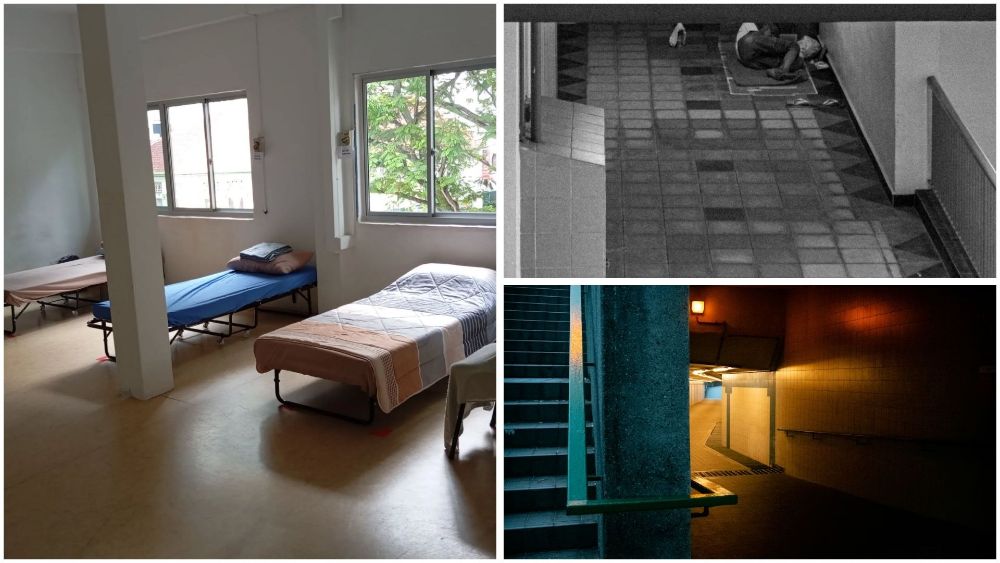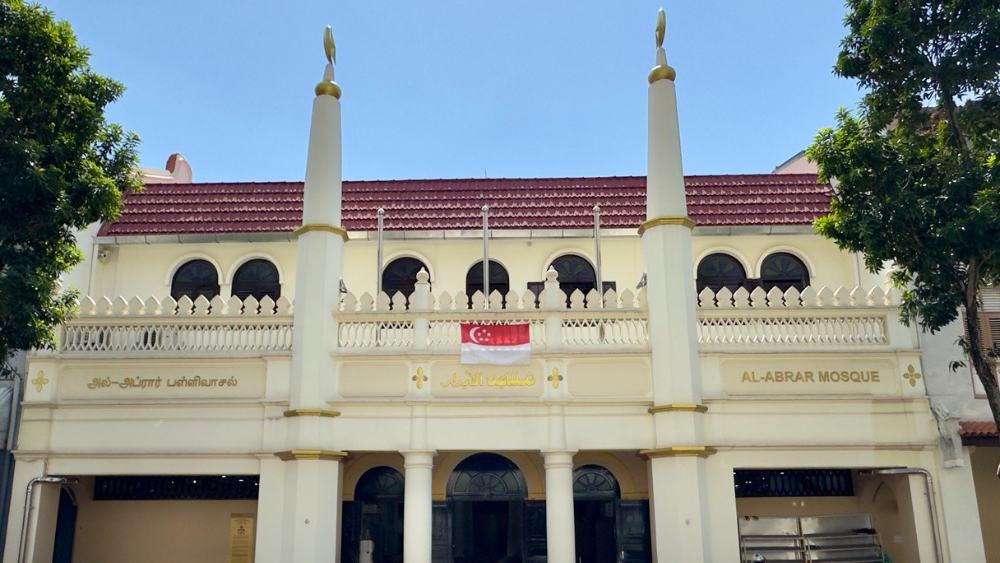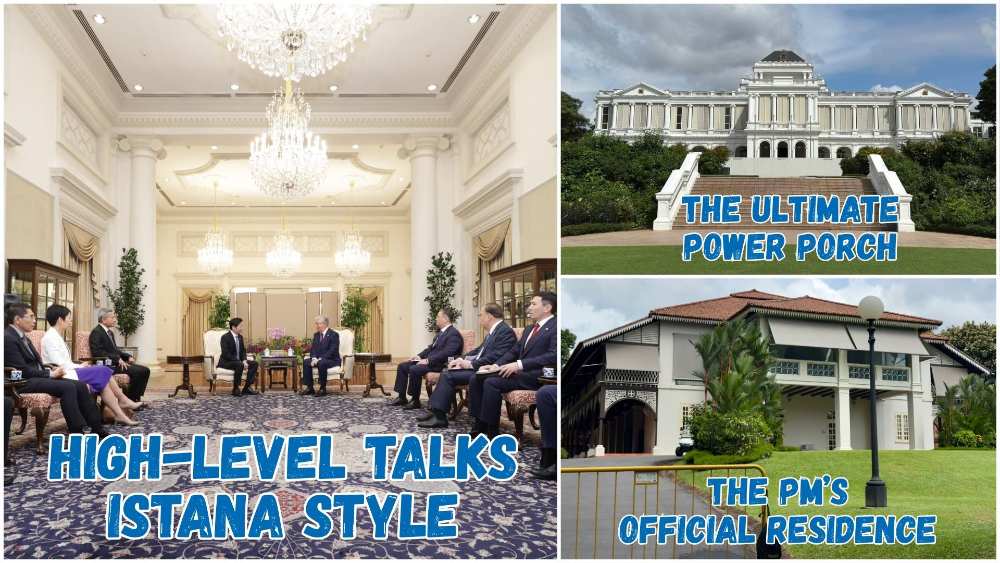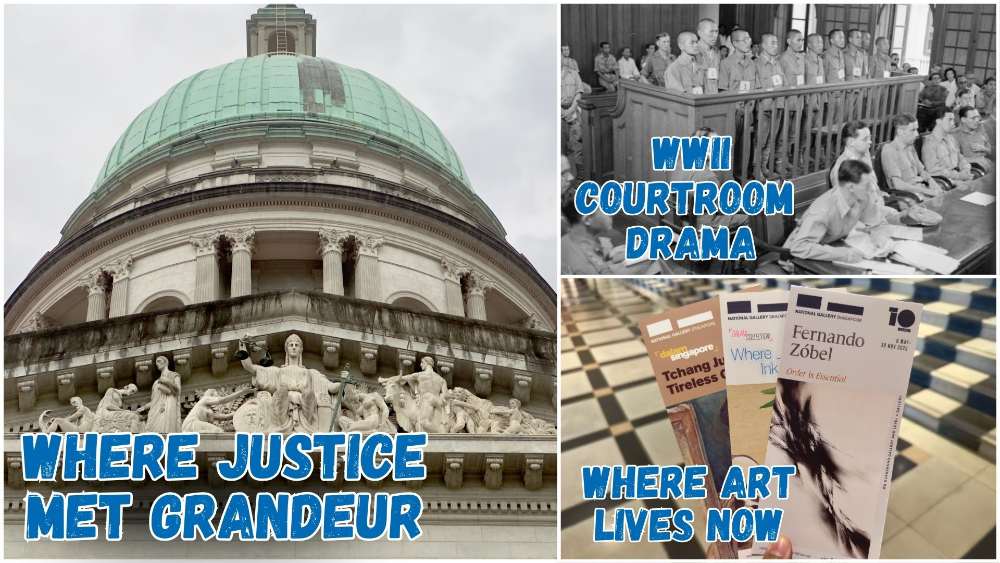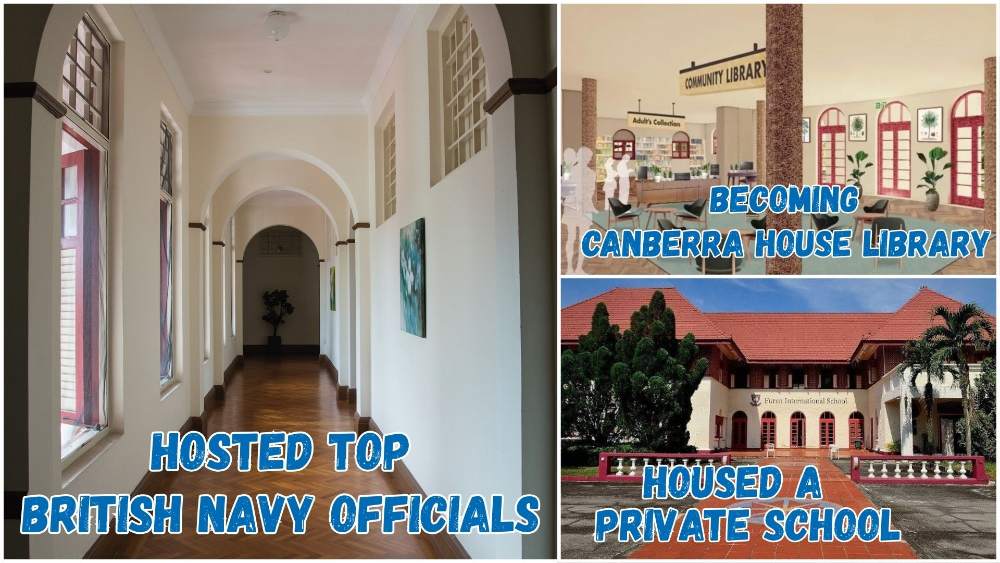National Monuments Of Singapore: Al-Abrar Mosque
What is a National Monument? Who gazettes them? How many national monuments are there in Singapore? To date, the Preservation of Sites and Monuments, a division of National Heritage Board, has identified and gazetted 75 buildings, structures and sites of national significance as an integral part of Singapore’s built heritage.
And we're here to tell you all about them - one National Monument at a time!
You've probably passed by or stepped into more than a few of them without realising they were National Monuments: Al-Abrar Mosque, Asian Civilisations Museum, the Civilian War Memorial, Saint Andrew's Cathedral, the Esplanade Park Memorials, Fort Siloso on Sentosa - no need to plan an itinerary for friends visiting from overseas; just show them this article ✌️
In this edition, we bring into focus one of Singapore's oldest mosques, Al-Abrar Mosque.
📍 Location
Al-Abrar Mosque was the 10th building to be gazetted as a National Monument in Singapore, and is located right beside other iconic National Monuments, such Thian Hock Keng temple, the Former Keng Teck Whay Building, and Former Nagore Dargore. The MRT station nearest to it is Telok Ayer.
📅 Significant dates
Dates built:
- 1827: Began as a simple thatched hut
- 1850-1855: Construction of the present brick mosque
Milestones:
- 1986-1989: Underwent a series of major renovations
- 1998: Acquired a neighbouring two-storey shophouse, turned it into a madrasah (a place for study) and a place for prayers
Date gazetted: 19 Nov 1974
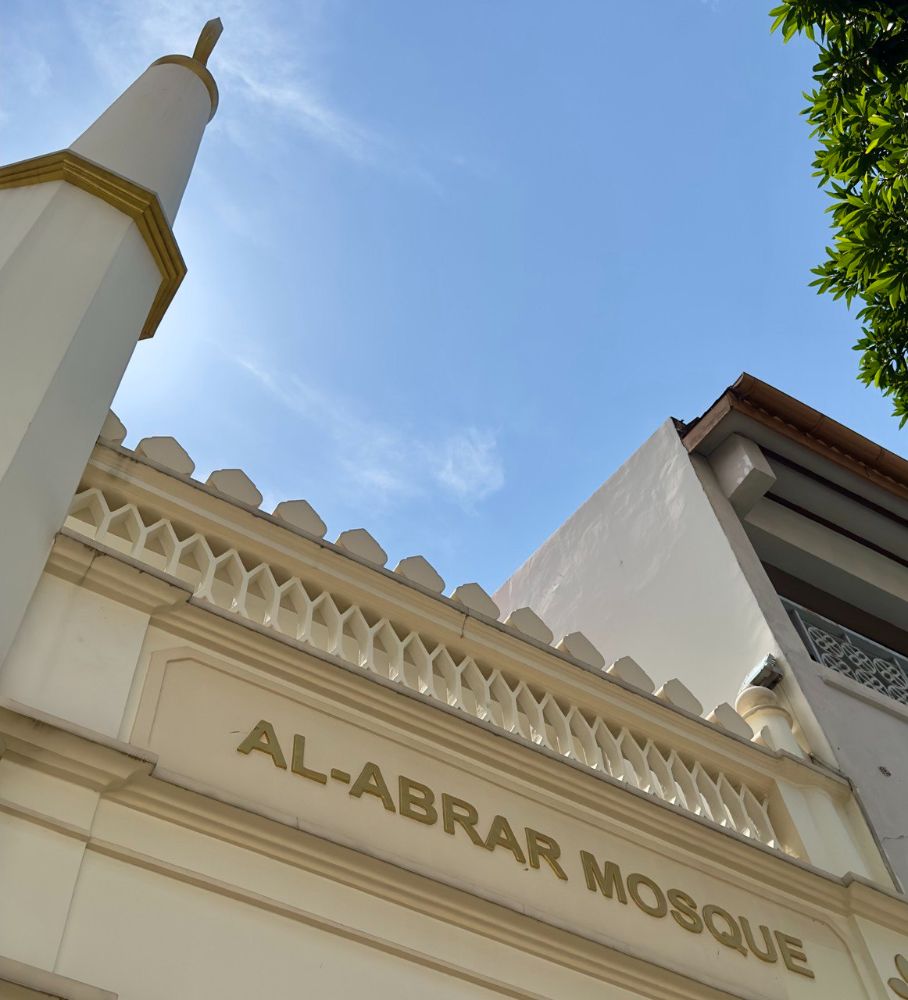 IMAGE: NG KAI
IMAGE: NG KAI
📜 History
Al-Abrar Mosque was established in 1827 as a simple thatched hut, which gave rise to its other Tamil name, (which means "Hut Mosque" in Tamil). The existing brick building was erected between 1850 and 1855. It stands on land that was originally granted a 999-year lease to Hadjee Puckery Mohamed Khatib bin Shaik Mydin as a trustee for the Tamil Muslim community.
Al-Abrar Mosque was founded in 1827, likely as a simple thatched hut, which led to its Tamil name, Kuchu Palli, meaning "Hut Mosque" in Tamil. The current brick structure was built between 1850 and 1855 on land granted under a 999-year lease to Hadjee Puckery Mohamed Khatib bin Shaik Mydin, who held it in trust for the Tamil Muslim community. On 21 Nov 1910, a court order was issued, under which new trustees were appointed to look after the mosque. The same trustees also looked after the Former Nagore Dargah on the same street, and Jamae Mosque on South Bridge Road.
Before the 1980s, the mosque underwent only minor repairs and repainting. However, major renovations between 1986 and 1989 significantly transformed its architecture.
Initially a single-storey structure, Al-Abrar Mosque underwent significant expansion with the addition of a second floor and a large jack roof to enlarge the prayer hall. The open courtyard between the entrance gate and the prayer hall was also enclosed, creating an upper gallery extension. These enhancements reportedly increased the mosque’s capacity to around 800 worshippers—more than double its previous limit. Additionally, extra space was acquired from a neighbouring shophouse and converted into a dedicated prayer hall for women.
One key figure in its development was Haji Mohamed Yusoff Hameed, who began volunteering at the mosque in 1972 and became its secretary in 1974. Presently, Al-Abrar Mosque is managed by MUIS.
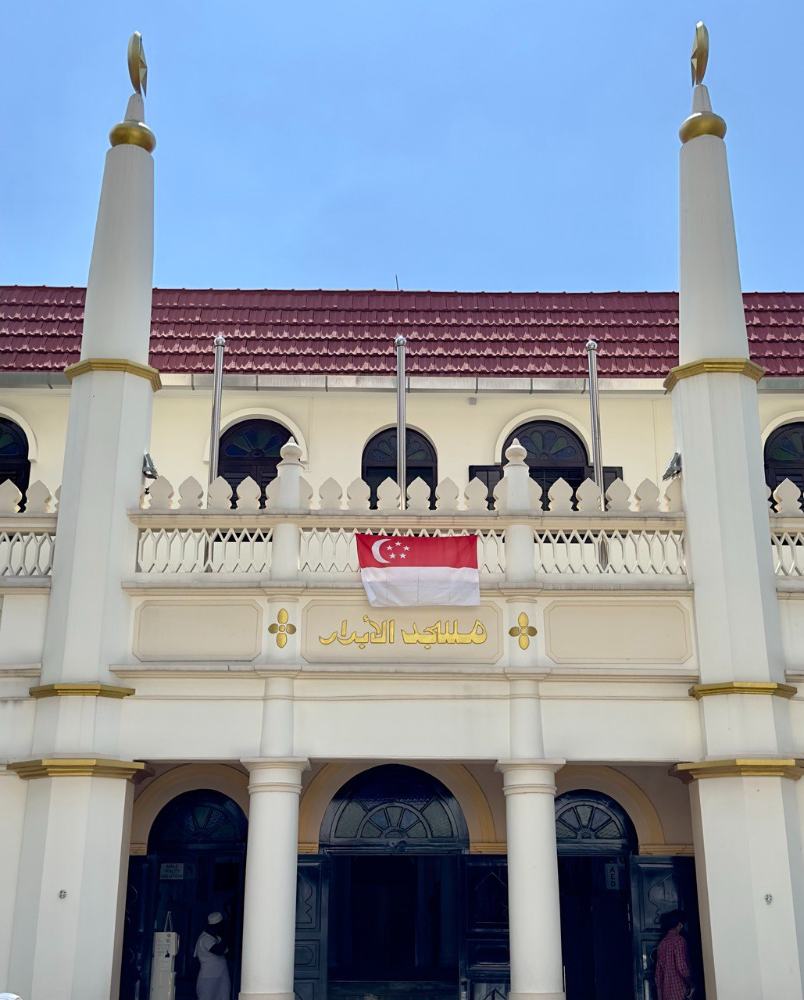 IMAGE: NG KAI
IMAGE: NG KAI
📐 Design and architecture
Nestled among a row of shophouses, Al-Abrar Mosque spans the width of approximately three units and incorporates the traditional five-foot walkway at its entrance. The lot lines of the prayer hall conveniently coincide with the qibla (the direction of the Kabba, the sacred building at Mecca, to which Muslims turn at prayer).
The mosque was designed in the Indo-Islamic architectural style. Its central bay is framed by two large octagonal minarets (tall towers usually attached to a mosque) topped with a crescent moon and star. These two minarets have been a visual landmark in the area since the mid-19th century.
The mosque’s merlon cresting (solid upright section of a battlement, typically of Islamic architecture) bears a resemblance to the design of Sultan Mosque (another National Monument) in Kampong Glam.
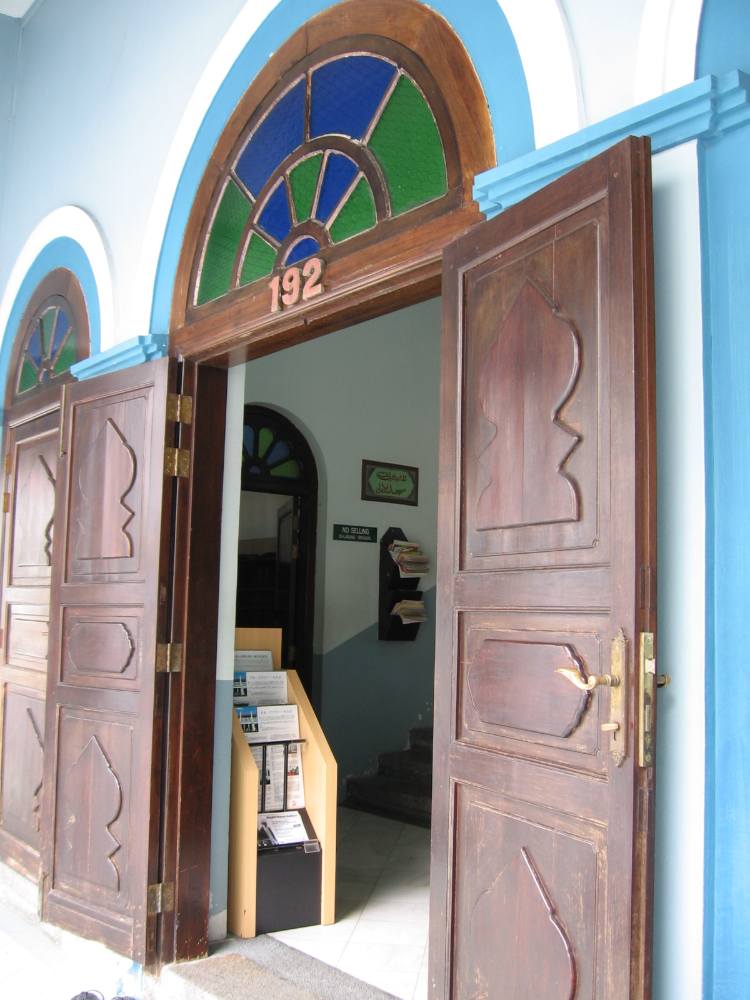
IMAGE: WIKIMEDIA COMMONS/@SENGKANG
Additionally, European Neoclassical elements bring an eclectic charm to the mosque’s design. Inside the prayer hall, Doric columns line the space, while coloured glass panels adorn the fanlights above the large French louvred windows. Above the mihrab (which indicates the orientation to Mecca, towards which Muslims would pray), a striking blue glass panel features a verse from the Quran in Arabic.
🕖 Opening hours
Regular visiting hours are weekdays from noon to 8.45pm daily. The mosque is closed on the weekend.
🎟️ Admission
Entry is free.
For the latest updates on Wonderwall.sg, be sure to follow us on TikTok, Telegram, Instagram, and Facebook. If you have a story idea for us, email us at [email protected].





